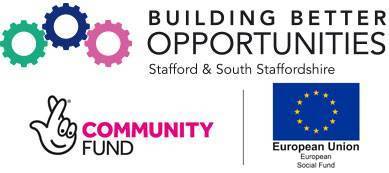What is Flexible Furlough? Employment
As the pandemic has changed throughout its existence, so has the job retention scheme. On July 1st 2020, the government was preparing to wind down restrictions and introduced flexible furlough in order to encourage places to bring back their employees. Whether you’re already on the scheme or you’ve been asked to use it, the team at BBO have put the following guide together to answer all of your questions.
What Does Flexible Furlough Mean?
The flexible furlough scheme is there for businesses who may need to bring their furloughed employees back to work, but only on a part-time basis. This is a scheme that was intended to be used once restrictions have been lifted, but it can also benefit businesses that have managed to increase business whilst the restrictions are still in place. The current Job Retention Scheme was extended to run until the 30th April 2021, with the government feeling optimistic that they can begin lifting restrictions shortly before this date. As a part of the job retention scheme, flexible furlough has also been extended.
This means that firms are given the flexibility to decide the hours and shift patterns of their employees. For the hours that their employees aren’t working, the government will continue paying 80% of their salaries. Statistics suggest that the Job Retention Scheme is protecting over 9.9 million jobs.
How Does Flexible Furlough Work?
The flexible furlough scheme asks businesses to start contributing towards the wages of their employees. For example, if you’re placed on flexible furlough, you will be paid for the days that you work. This pay will be based on a pro-rata rate according to your reference salary. For the days where your employer wishes to keep you furloughed, you will be paid 80% of your reference salary pro-rata, capped at £2,500.
In order to make it easier for businesses to adapt to changing circumstances, staff can also be moved in and out of flexible and longer term furlough.
Can I Refuse Flexible Furlough?
It’s important to note that the decision of whether you go from being furloughed to flexible furlough or from flexible furlough to full-time is ultimately made by your employer. In order to put you on any type of furlough, your employer may need to make amendments to your contract of employment. Most of these changes will require you to agree to them, and in most cases this will be beneficial to you with the intention of protecting your employment.
However, if you do refuse these changes to your contract, your employer is left in a situation where they may choose to either make redundancies or instate the changes anyway. If either of these happen, and you feel like you have been unfairly treated, there might be enough reason to make an unfair dismissal claim. However, some contracts already include such clauses, particularly those for people starting since the pandemic.
When Does Flexible Furlough End?
The job retention scheme in its current form is set to expire on the 30th April 2021. However, as we’ve seen in the past, there is enough reason to believe that this won’t spell the complete end of the scheme. Whilst nothing is set in stone or certain, as restrictions begin to be lifted, it’s likely that the government will consider winding down furlough at a similar rate to opening the economy.
Get Furlough Advice with Building Better Opportunities
If you still have any questions regarding flexible furlough, please contact us. Our friendly and experienced team are always on hand to help with any queries. Having been subject to so many changes and being such a new concept to many, we understand how difficult it can be to get your head around the scheme. Here at Building Better Opportunities, we are committed to supporting people across Stafford and South Staffordshire with Employment Support, Welfare advice, Financial Support, Health and Wellbeing and Personal Development.
If you have been affected by furlough, redundancy or other employment related issues, please drop in and see one of our advocates.
